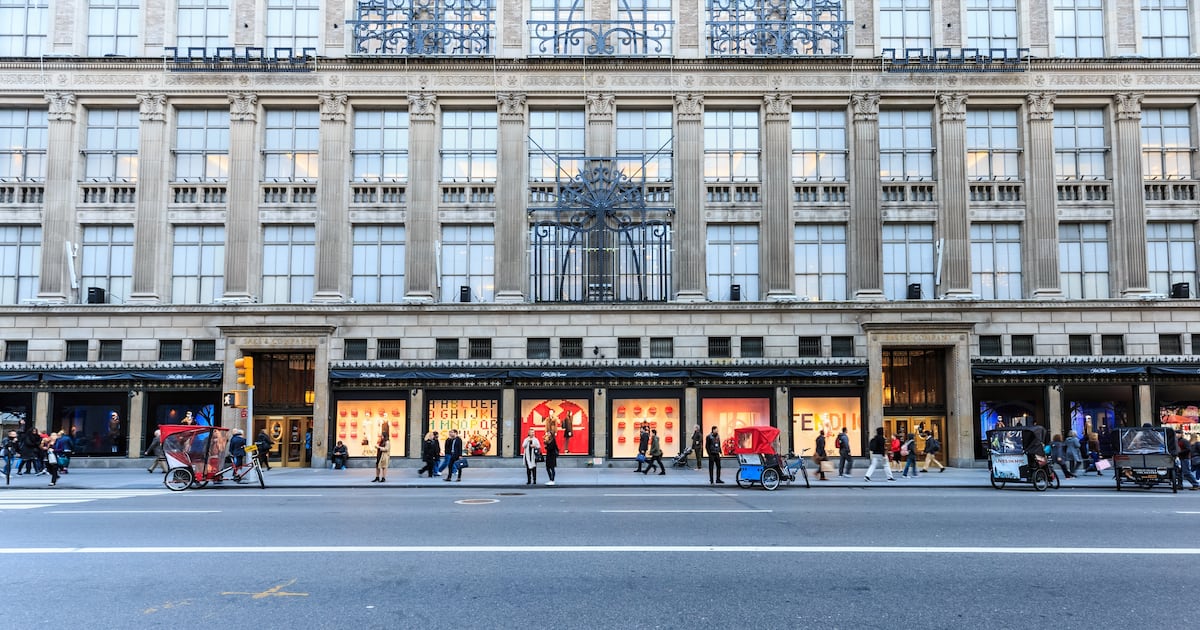
Saks Globalâs liquidity crunch has come to a head.
Amid mounting concerns about the department store operatorâs ability to meet an interest payment due next month, a group of bondholders who own a majority of the department store operatorâs $2.2 billion debt formed a group over the weekend to provide new financing, according to media reports.
A potential deal could see the group renegotiate its standing relative to other creditors, such as a higher interest rate or priority in a bankruptcy, in exchange for providing additional liquidity, a form of financing known as a liability management exercise. The group hired Lazard Inc. and Paul Weiss Rifkind Wharton & Garrison as advisers on the potential new financing, Bloomberg reported Sunday.
Along with another loan, Saks Global could secure over $500 million in total liquidity, according to Debtwire global head of credit research Tim Hynes. That should be enough for the company to cover the June interest payment and pay vendors through the holiday season.
What the financing wonât do is address Saksâ increasingly precarious positioning in the fashion marketplace. The companyâs relationship with many brands has soured since its acquisition of rival Neiman Marcus, which closed in December. After months of complaints about late or missing payments for merchandise, Saks announced in February it would make vendors whole by mid-2026, and pay for new merchandise within 90 days. Unpaid supplier invoices reached $1.3 billion as of last August, according to Debtwire.
The vendor repayment plan was too little, too late for some brands, which have scaled back on the amount of inventory they send Saks and Neiman Marcus. Others, including some of the biggest European luxury labels, have pulled out of Saksâ stores entirely in recent years, part of a wider trend that has seen high-end brands prioritise their own sales channels.
Saksâ sales have slowed and its cash position has worsened. According to documents obtained by Debtwire, the retailer generated $7.3 billion in sales in the 12 months ending Feb. 3, down 17 percent year on year. In that same period, earnings before interest, taxes, depreciation and amortisation fell 30 percent. Saksâ bond, which was issued in December, traded at 48 cents on the dollar on Monday, and its value has fallen sharply in recent weeks as concerns about the companyâs financial health have escalated.
âThis is the companyâs final gasp for air,â said distressed assets expert and ProChain Capital president David Tawil, of the weekend negotiations with creditors.
Saks Global executives have projected strength publicly even as they negotiate emergency financing behind the scenes. At the World Retail Congress in London last week, executive chairman Richard Baker said the company now controls 60 percent of luxury distribution in the US. He said the Neiman Marcus acquisition will save the combined company over $600 million a year as it lays off staff, closes stores and cuts other costs.
The problem, however, as reflected in Saksâ plummeting bond value, is that investors are sceptical of its ability to pay down debts. Credit rating agency S&P Global placed Saks Global on negative credit watch, a step before downgrading its current CCC+ rating.
âSaks Global is significantly ahead on savings,â the company told BoF in a statement Monday.
Whatâs more, Saks is facing a vendor exodus as it continues to struggle with payment for orders, which will further strain both sales and cash flow.
Saksâ first round of payments on past-due balances will begin in July. But the company appears to be wavering on its commitment to pay for new merchandise within 90 days. While some brands told The Business of Fashion they have received prompt payment, one New York label that shipped merchandise to Neiman Marcus in February said it was told by the retailer last week that it would be paid within 120 days, rather than 90.
The falling bond price and refinancing negotiations are also shaking vendorsâ confidence. Another American label, reacting to the news about Saksâ liquidity issues, has proactively cancelled its orders for summer and fall.
At the World Retail Conference, Baker said Saks plans to âedit outâ 500 to 600 brands from its storesâ selection. He added the priority now is to focus on private labels as well as brands in which it has a controlled interest via its partnership with Authentic Brands Group, which owns the intellectual property of Hervé Léger, Brooks Brothers, Nautica and more.
The idea is that with fewer but stronger brand partnerships, Saks Global would also have a stronger grip on markdowns, which have plagued American luxury retail in recent years. The company also recently opened a storefront on Amazon, though it sells only a fraction of its brands there.
âNow with our new structure, weâre able to delay promotions, which is going to give our brand partners the chance to have more full price selling in their own stores,â said Baker. âIf we do this right, less inventory, less vendors, more margin and less promotion is going to make the entire industry in the United States healthier.â
Baker and Salter also outlined their ambitions in building real estate developments around the world, combining the Saks name recognition with luxury hospitality. Salter said there are six or seven projects already in the pipeline, with opportunities in the Middle East and Asia Pacific.
It will take time to boost sales and generate enough cash to be a self-sustaining business again. Thatâs why securing additional capital from the bondholder majority group and the prospective loan is so important, Hynes said. He said Saks is likely to secure new financing because it still has assets to put up as collateral, including its intellectual property and its Fifth Avenue flagship, which a 2024 appraisal valued at $3.6 billion.
Even if those plans fall through, Saks may be too big and well known to fail.
âIf the company doesnât get the additional financing, then they wind up filing for bankruptcy,â Hynes added. âBut the company will still be around. Itâll reorganise. Saks wonât just disappear.â

